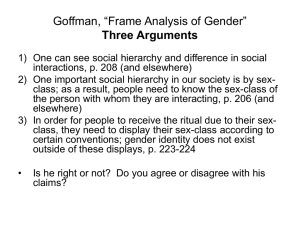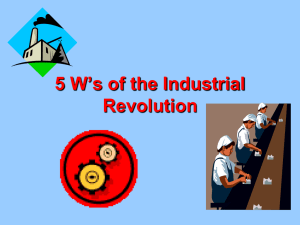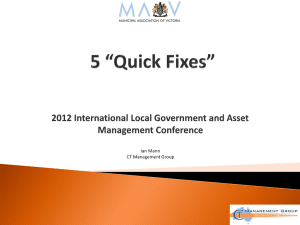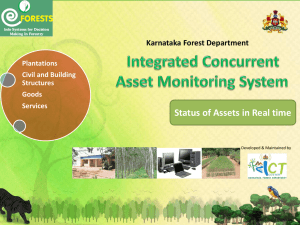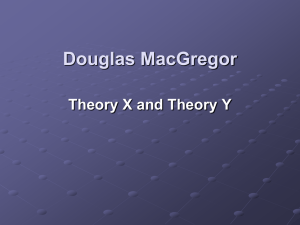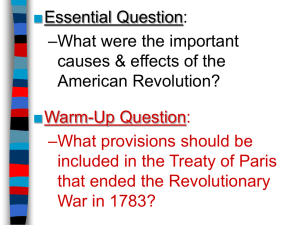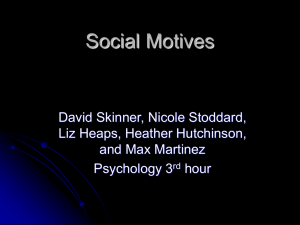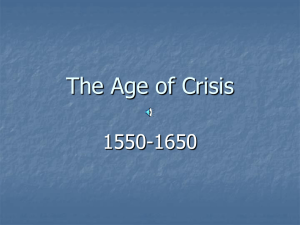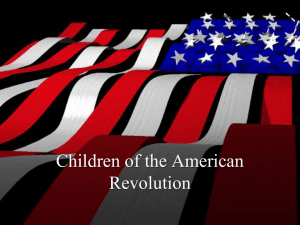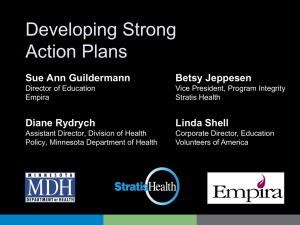V. Organizational Structure
advertisement
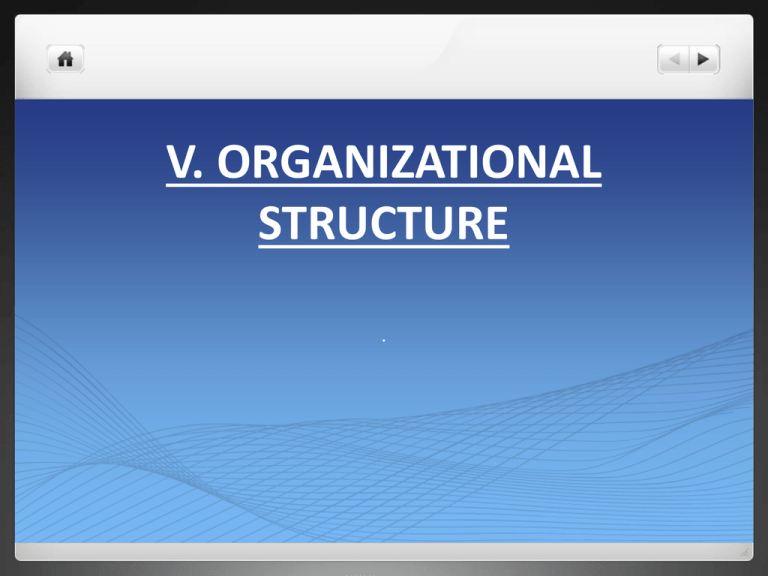
V. ORGANIZATIONAL STRUCTURE . V. ORGANIZATIONAL STRUCTURE A. WHAT IS AN ORGANIZATION? B. TRADITIONAL ORGANIZATIONAL STRUCTURES C. CONSEQUENCES OF TRADITIONAL STRUCTURES D. ORGANIZATIONAL CONSEQUENCES OF AN ASSET ORIENTATION E. INTERMEDIATE COMPROMISE V. ORGANIZATIONAL STRUCTURE A. WHAT IS AN ORGANIZATION? B. TRADITIONAL ORGANIZATIONAL STRUCTURES C. CONSEQUENCES OF TRADITIONAL STRUCTURES D. ORGANIZATIONAL CONSEQUENCES OF AN ASSET ORIENTATION E. INTERMEDIATE COMPROMISE A. WHAT IS AN ORGANIZATION 1. Why Do We Have Organizations? What are they Good For ? 2. What Do They Need to Succeed ? 3. Less Effective Organizations. 4. What is Potentially Bad About an Organization 5. Difference Between Public and Private Organizations ? V. ORGANIZATIONAL STRUCTURE A. WHAT IS AN ORGANIZATION? B. TRADITIONAL ORGANIZATIONAL STRUCTURES C. CONSEQUENCES OF TRADITIONAL STRUCTURES D. ORGANIZATIONAL CONSEQUENCES OF AN ASSET ORIENTATION E. INTERMEDIATE COMPROMISE B. TRADITIONAL ORGAIZATIONAL STRUCTURE Hierarchy History of Hierarchy Military Industrial Revolution B. TRADITIONAL ORGAIZATIONAL STRUCTURE Hierarchy History of Hierarchy Military Industrial Revolution B. TRADITIONAL ORGAIZATIONAL STRUCTURE Hierarchy History of Hierarchy Military Industrial Revolution B. TRADITIONAL ORGAIZATIONAL STRUCTURE Hierarchy History of Hierarchy Military Industrial Revolution Industrial Revolution 1800s Production of physical goods Move from craft production to mass production Economies of scale in the production of physical things Physical goods made of standardized parts In mass production parts must fit together Human resources as brawn, not brain Industrial Revolution p. 2 Evolution of large organizations Like armies Need to control resources and make them interface properly This includes human resources Centralization of decision making Concern for control of deviation, deviance Quality of each unit based on staying within tolerance limits. Tolerance limits Industrial Revolution p. 3 Control of worker behavior Within tolerance limits Control wages Quality has nothing to do with creativity at the worker level Quality of each unit based on staying within tolerance limits. V. ORGANIZATIONAL STRUCTURE A. WHAT IS AN ORGANIZATION? B. TRADITIONAL ORGANIZATIONAL STRUCTURES C. CONSEQUENCES OF TRADITIONAL STRUCTURES D. ORGANIZATIONAL CONSEQUENCES OF AN ASSET ORIENTATION E. INTERMEDIATE COMPROMISE C. INEFFICIENCIES OF TRADITIONAL MODEL …Related to Information Flow …Related to Decision Systems. …Related to Conflict …Related to Motivation …Related to Personnel Evaluation …Related to Characteristics of the Modern World. Suggested Solutions. V. ORGANIZATIONAL STRUCTURE A. WHAT IS AN ORGANIZATION? B. TRADITIONAL ORGANIZATIONAL STRUCTURES C. CONSEQUENCES OF TRADITIONAL STRUCTURES D. ORGANIZATIONAL CONSEQUENCES OF AN ASSET ORIENTATION E. INTERMEDIATE COMPROMISE D. Organizational Consequences of an Asset Orientation Principals Organizational Consequences Principals 1) Every customer, client, citizen, employee, neighborhood, and community is recognized to have tremendous strengths. 2) If properly recognized, encouraged, cultivated, and developed, these strengths represent powerful assets that can be applied toward greater achievement by individuals, community organizations, agencies, neighborhood communities, and the community at large. 3) The definition and recognition of these strengths, the way they are developed, the direction in which they are applied, and the ultimate goals that are to be achieved with them are defined from the inside out. That is, they come from within the individual, the local organization, the neighborhood community, and the larger community, in that order. Goals, problems, directions and solutions are not defined by outside agencies or agents. Principals p.2 4) The transitional role of the outside agent (the public employee) is to ask the following questions of individuals, neighborhood, communities and organizations: a) What are you proud of about yourself, your family and your community? b) What do you want to achieve? c) What do you want your community to achieve? d) What would you like to contribute to your community, country? Principals p.3 ....... x) What barriers or challenges do you face in achieving your dreams? y) Can we help each other? z) If so, how? 5) Based on the above, the client / customer / citizens is the boss, the one who is the focus of, the D. Organizational Consequences of an Asset Orientation Principals Organizational Consequences Organizational Consequences General No power relationship Utilize Expertise Develop everyone’s skills Avoid turf and territorial issues Specific Organizational Consequences No hierarchy Do strategic planning and create teams to address strategic issues V. ORGANIZATIONAL STRUCTURE A. WHAT IS AN ORGANIZATION? B. TRADITIONAL ORGANIZATIONAL STRUCTURES C. CONSEQUENCES OF TRADITIONAL STRUCTURES D. ORGANIZATIONAL CONSEQUENCES OF AN ASSET ORIENTATION E. INTERMEDIATE COMPROMISE E. INTERMEDIATE COMPROMISE STEP HIERARCHY AND ALTERNATIVES) Matrix Management Learning Organizations
